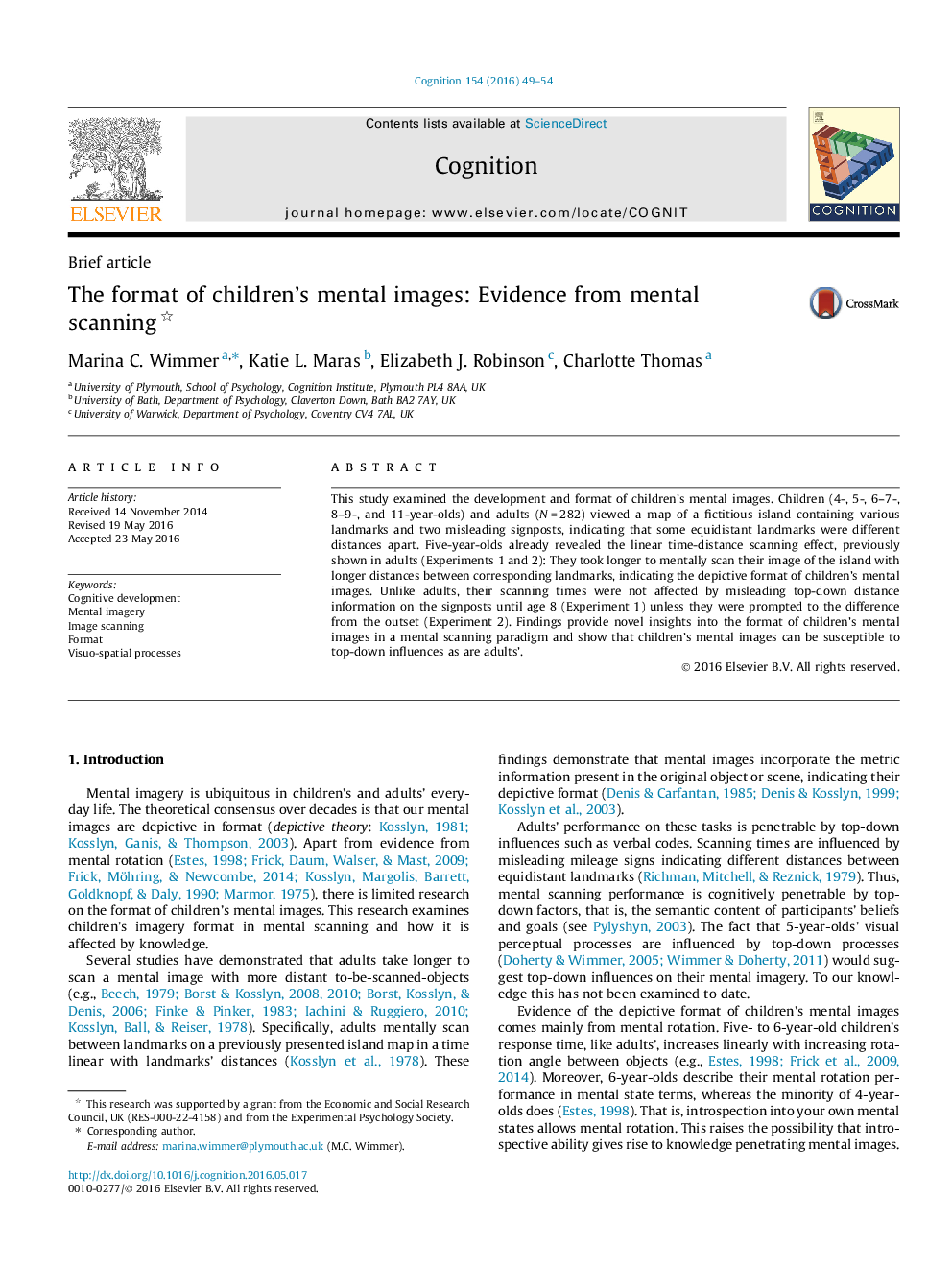| Article ID | Journal | Published Year | Pages | File Type |
|---|---|---|---|---|
| 7285967 | Cognition | 2016 | 6 Pages |
Abstract
This study examined the development and format of children's mental images. Children (4-, 5-, 6-7-, 8-9-, and 11-year-olds) and adults (NÂ =Â 282) viewed a map of a fictitious island containing various landmarks and two misleading signposts, indicating that some equidistant landmarks were different distances apart. Five-year-olds already revealed the linear time-distance scanning effect, previously shown in adults (Experiments 1 and 2): They took longer to mentally scan their image of the island with longer distances between corresponding landmarks, indicating the depictive format of children's mental images. Unlike adults, their scanning times were not affected by misleading top-down distance information on the signposts until age 8 (Experiment 1) unless they were prompted to the difference from the outset (Experiment 2). Findings provide novel insights into the format of children's mental images in a mental scanning paradigm and show that children's mental images can be susceptible to top-down influences as are adults'.
Related Topics
Life Sciences
Neuroscience
Cognitive Neuroscience
Authors
Marina C. Wimmer, Katie L. Maras, Elizabeth J. Robinson, Charlotte Thomas,
